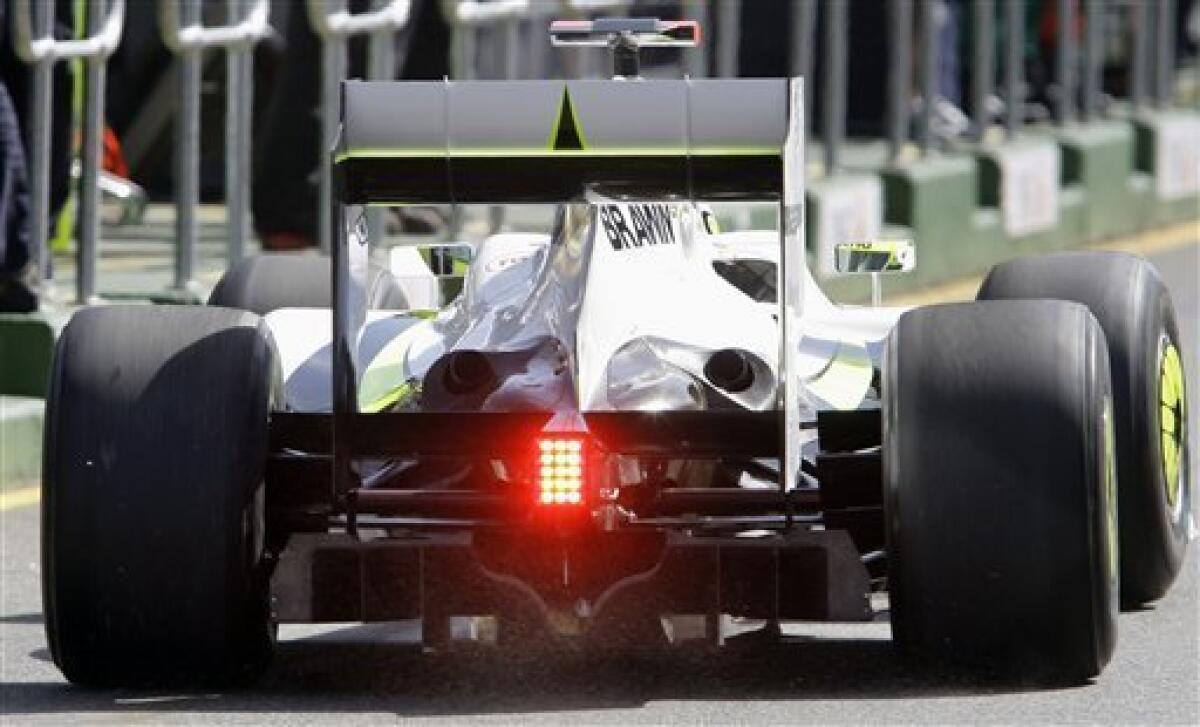FIA rules in favor of part that helped Brawn GP

Brawn GP’s Jenson Button can keep his Formula One victories, while Ferrari will have to rush to redesign its car.
The world motor sports governing body Wednesday approved the use of a rear diffuser design that helped Button win the season’s first two races in Australia and Malaysia.
The decision by the FIA’s International Court of Appeals ends efforts by Ferrari, Renault, BMW Sauber and Red Bull Racing to protest the diffusers. Had they won their appeal, Button could have had his victories annulled.
“We are pleased with the decision,” Brawn GP team chief Ross Brawn said. “The decision of the International Court of Appeal brings this matter to its conclusion and we look forward to continuing on the track the challenge of what has been a very exciting start to the 2009 FIA Formula One World Championship.”
Button leads the drivers’ standings with 15 points, five more than teammate Rubens Barrichello. Toyota drivers Jarno Trulli and Timo Glock, who also use the diffuser, are next.
The FIA rejected the appeal by the four teams against the technology which channels the flow of air from the front to rear and helps create greater downforce through corners.
“Based on the arguments heard and evidence before it, the Court has concluded that the stewards were correct to find that the cars in question comply with the applicable regulations,” FIA said in a brief statement.
The decision was a victory for diffuser users Brawn GP, Toyota and Williams and could force their rivals to quickly add the devices to catch up.
It’s also a victory for new rule changes in the sport designed to encourage more passing. Brawn, Toyota and Williams have upended the established hierarchies of F1, breaking the Ferrari-McLaren dominance of the sport.
The next test will be this weekend’s Chinese Grand Prix in Shanghai.
The dispute stemmed from rule changes passed last year, with the protesting teams claiming that the design of the diffusers in question violated new aerodynamics regulations. Brawn, Williams and Toyota, meanwhile, maintained that they were simply using a loophole in the new rules that the other teams had missed by designing their rear bodywork to effectively act as part of the diffuser, increasing its size.
Brawn GP, the former Honda team which was saved by a last-minute buyout by Ross Brawn, is the first new outfit to win its opening two races since Alfa Romeo in the inaugural F1 season in 1950.
“We respect the right of our competitors to query any design or concept used on our cars through the channels available to them,” Ross Brawn said in a statement.
Ferrari led the arguments against the diffusers during contentious, eight-hour hearings at the FIA Paris headquarters Tuesday.
“We are waiting to hear the reasons the ICA rejected the appeal,” said Stefano Domenicali, Ferrari’s team principal. “Unfortunately this decision forces us to intervene on fundamental areas of the car’s design in order to be able to compete on an equal footing.”
“That will take time and money,” he said. “We will now double our efforts to get the team back to the highest level of competitivity.”
BMW motorsport director Mario Theissen said the team would accept the decision but didn’t consider it fully legitimate.
Theissen said the ruling “doesn’t achieve the reduction in downforce and cornering speed intended ... when the new regulations were drawn up.”
The decision also means “seven teams will have to invest heavily in carrying out the necessary modifications to their cars,” he said.
Christian Horner, Red Bull team principal, said, “Obviously, we’re disappointed with today’s announcement but we’ll accept it. This means we will now have to develop our own double-diffuser solution.”
Williams chief executive Adam Parr predicted the rival teams would install rear diffusers “within days.”
Toyota welcomed the ruling. Toyota chairman and team principal Tadashi Yamashina said, “This has been a challenging period for Formula One and I am pleased this issue is now in the past and we can focus on an exciting season on the track.”
–––
Associated Press writer Scott Sayare in Paris contributed to this report.